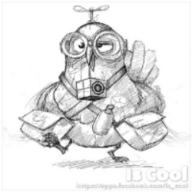✔ 最佳答案
1) was 係verb-to-be 其中一款, 佢係is 的過去式。
Past tense (過去式)
e.g. She was very happy. 她很開心。
Past Continuous tense (過去進行式)
e.g. She was doing her homework when the door bell rang yesterday.
昨日當門鈴響起的時候, 她正在做家課。
_________________________________________________
did 係助動詞 (auxiliary verb), 佢係要配合動詞一起使用。
1) 用於否定句 (有not 字的句子)
e.g. She did not finish her homework on time yesterday.
2) 用於問句
e.g. Mum: Did you finish your homework yesterday?
__________________________________________________
She was dissatisified with her salary.
satisfied (感到) 滿意 = satisfy (令…滿意) 的過去分詞的身份 (past participle, 即以下例子的第3個身份))
正如:
go (1) -> went (2) -> gone (3) -> going (4)
past participle 可用作形容詞 (其實, present participle (4) 亦可)
dis係prefix, 可加插在字的前端, 而將字義變成相反。
dis satisfied => dissatisfied 不滿意
所以全句意思係:
她對自己的薪酬感到不滿。
圖片參考:
http://tw.yimg.com/i/tw/ugc/rte/smiley_1.gif
2008-09-16 20:25:31 補充:
補充: 幾時用 was
另一個情況會用 was 係
當 main verb (這裏係 punish) 係用於被動型式 (同時又係過去式), 而 subject 係 he , she 或 it 其中一款
E.g. Last week, he WAS punished by his teacher.
2008-09-25 07:53:41 補充:
回應: solomanng1994
你問點解係She was dissatisfied with her salary. 而唔係 She is dissatisified ...
因為她對自己薪水不滿的情況己成過去, 即是現在已沒有此想法。
如果現在仍有此想法, 就應該用She is dissatisfied with her salary.


